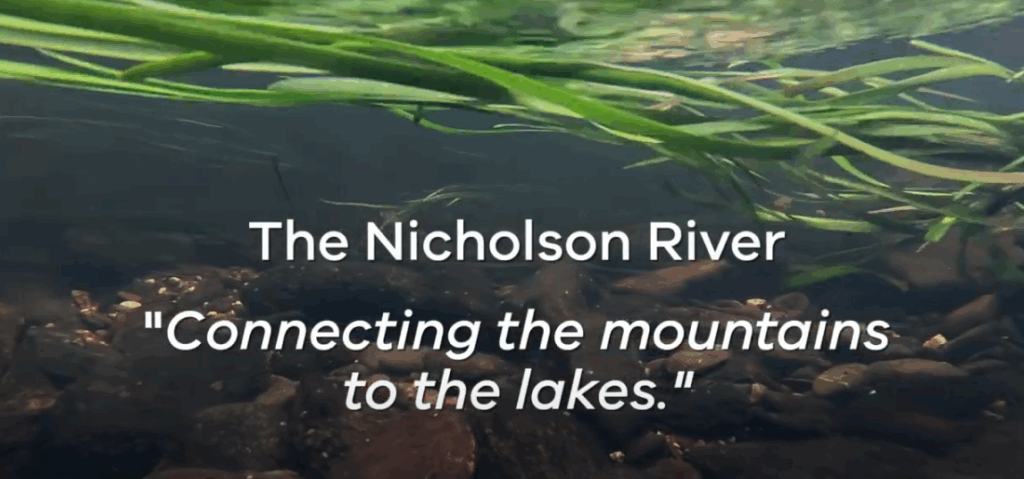Works to enhance the health of the Buchan River and improve the visitor experience at Bluff Reserve are now complete, delivering benefits for both the environment and the community.
These improvements at the popular reserve, a favourite spot for swimming, fishing, and relaxing by the water has been welcomed by the local community.
The East Gippsland Catchment Management Authority (EGCMA) engaged contractors to undertake mechanical works, followed by EGCMA staff planting native vegetation that, once established, will help stabilise the banks. This work enhances the area while maintaining accessibility for visitors.
Multiple native species have been planted that will support the banks including shade trees such as kanukas and currajongs, species that have been identified as preferred species.
“Rivers are dynamic systems, and their shape and direction is often determined by nature. This project aims to enhance the environment in an area that is both highly valued and widely enjoyed by the local community,” said Bec Hemming, East Gippsland CMA’s CEO.
“We are grateful to the local community for their patience and understanding while the work was underway and giving the planted area the space it needs to have a chance to grow,” added Bec.
The project is supported by the Victorian Government through the Out Catchments, Our Communities program.
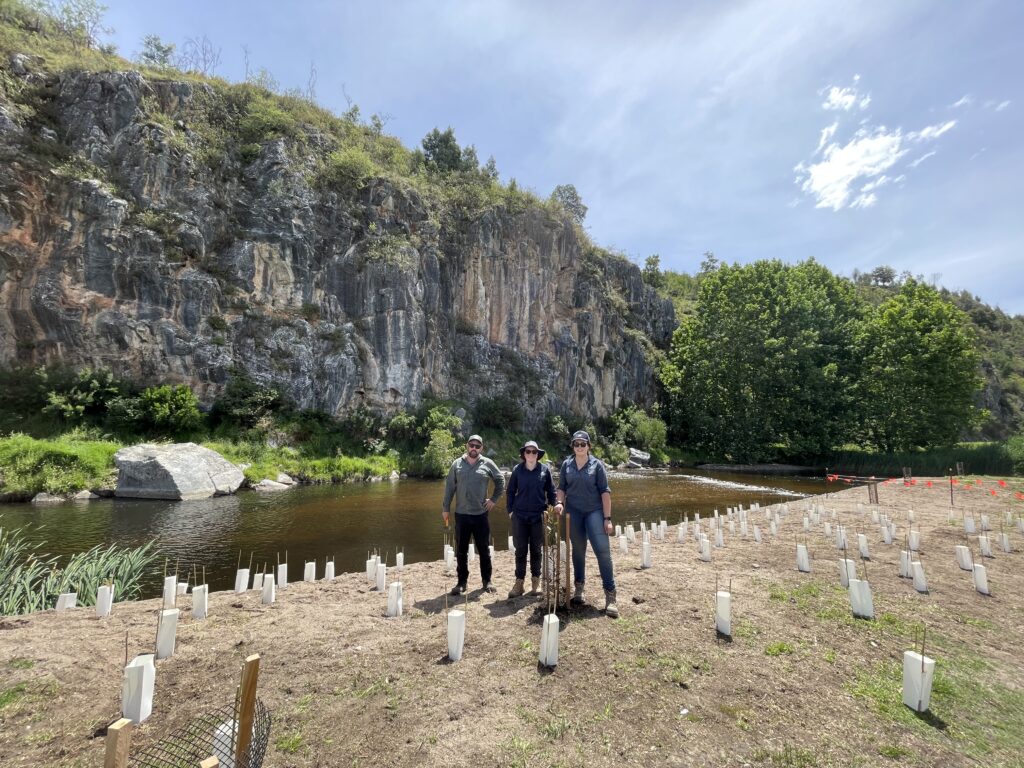
Key native species such as black bream, estuary perch and Australian Bass will benefit from improved habitat in the Mitchell River.
The East Gippsland Catchment Management Authority (CMA) recently completed the installation of log structures throughout the Tambo River estuary to enhance habitat for native fish. Additional structures are scheduled to be placed in the lower reaches of the Mitchell River in the coming weeks.
Large timber structures will create complex woody arrangements that improve the availability, density, and connectivity of habitat for estuarine fish species. These enhancements will support healthier fish communities across the Gippsland Lakes and Estuarine reaches.
“Recreational fishing is extremely popular in East Gippsland, and improving fish habitat not only benefits the environment, but it also supports thriving fish populations for fishing enthusiasts to enjoy,” said Bec Hemming East Gippsland CMA CEO.
From mid to late November, contractors will access the Mitchell River via designated loading points along Riverbank East Road in Bairnsdale. The works are expected to take approximately four weeks, and the road will remain open throughout this period.
We ask that anyone in the area to follow directions and signage during the works. For further information, please contact the East Gippsland CMA. This project is funded by the Fish Habitat Improvement Fund, which is part of the Victorian Government’s $96 million Go Fishing and Boating Plan.

The Welcome Back the Birds event held last Friday at the Eagle Point Foreshore was a wonderful day out.
With a vibrant crowd of community members, nature lovers and families coming together to celebrate the return of migratory birds and learn more about the incredible journeys these species undertake each year.
The location provided the perfect shelter from the wind in behind the Eagle Point reserve. The day was filled with engaging activities, informative displays, and opportunities to connect with local organisations and community groups dedicated to protecting and enhancing habitats for all species.
“It was the perfect place for people to learn about inspiring initiatives across the Gippsland Lakes and surrounding catchments, and to discover how habitat restoration projects are helping support the migratory birds that visit our region,” said Bec Hemming, East Gippsland Catchment Management Authority’s CEO.
From hands on activities and guided nature walks to insightful talks and scenic boat tours, the event offered something for everyone, with plenty of opportunities to discover, connect, and learn.
“People discovered the vital role Australia plays in the East Asian-Australasian Flyway and how simple actions, like observing signage and keeping dogs on leads, can help protect these vulnerable species.”
“The enthusiasm leading up to and on the day helped create a friendly and welcoming space for everyone – and reminded us how powerful it is when people come together to talk and share ideas and knowledge,” added Bec.
Together, we can help these remarkable birds continue to return year after year. The East Gippsland Catchment Management Authority extends a massive thank you to all who helped organise, attended, participated, and contributed to making the day so special.

Mallacoota local Bryce Watts-Parker takes out the NextGen Landcare Award at the National Landcare Awards last week.
The NextGen Landcare Award recognises young environmental leaders (aged 18-35) who are making a real impact through hands-on Landcare projects and community engagement. It celebrates those who inspire others to care for their local environment and lead positive change.
Bryce, a passionate environmentalist with a deep appreciation for East Gippsland’s unique flora and native reptiles, has become a well-known advocate for the region’s natural environment.
Following the devastating Black Summer bushfires, Bryce played a pivotal role in conceiving and delivering the idea of the Mallacoota Endemic Garden and the local community nursery – two initiatives that have helped reconnect the community with nature and support ecological recovery.
Bryce said, “I am honoured to be the recipient of the 2025 NextGen Landcare Award, it was such a sensational night and to share it with so many incredible people was a privilege.”
“My family, friends and colleagues have played a massive role in the projects I have completed to date, and it would not have been possible without their support.”
“The Friends of Mallacoota have been critical partners in the delivery of the Endemic Garden and the community nursery, particularly Max Elliot who has been my partner in crime working to protect flora within our community,” added Bryce.
East Gippsland Catchment Management’s CEO, Bec Hemming said “Bryce contributes to these initiatives in his own time, driven purely by his passion for the natural environment. He is also a highly valued colleague at the CMA, where he works closely with landholders on environmental and river health projects.”
“Bryce plays a key role in delivering the CMA’s school and community engagement activities, including the popular Catchment Connections school program”.
“Bryce has achieved so much in the fire recovery of Far East Victoria and inspired so many to learn about bushfire recovery and the importance of protecting threatened plant species.” “We are very proud of our colleague and extremely happy that he has won this prestigious award and at such a young age,” said Bec.
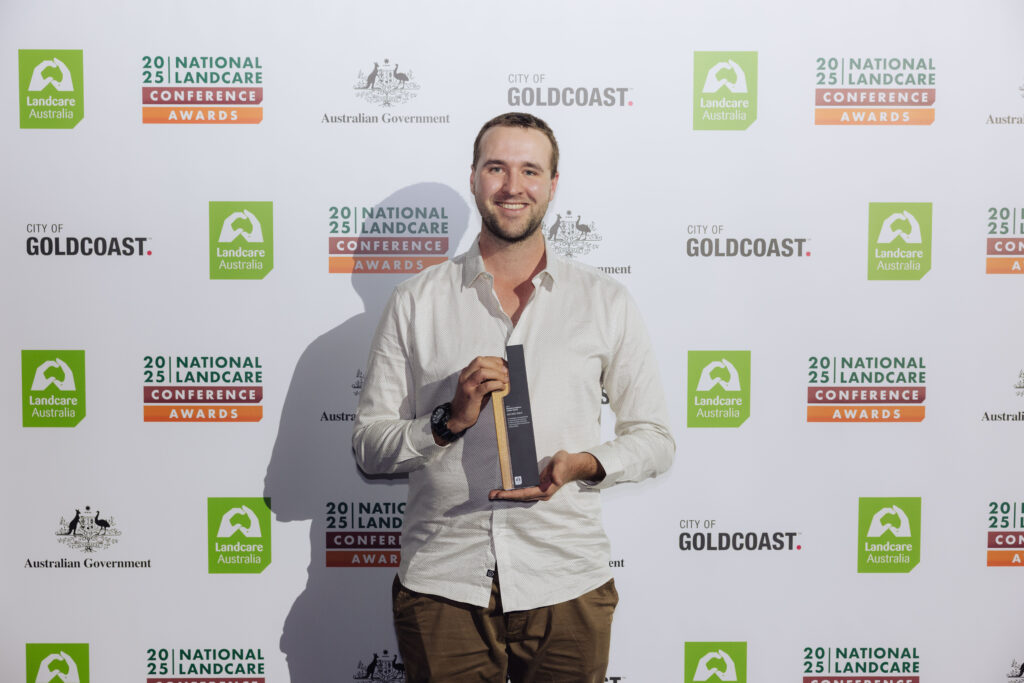
An inspiring local project is using science-based restoration to rebuild critical shorebird habitat and guide conservation into the future.
There have been major declines to populations of shorebirds across Australia due to predation from introduced species, loss of habitat and human activities. Breeding colonies are becoming rarer, and many traditional nesting sites have been abandoned.
“This collaborative project in the Ramsar listed Gippsland Lakes is enhancing critical habitats and nesting areas for Little Terns, Australian Fairy Terns, Eastern Hooded Plovers, and Eastern Curlews through targeted sand renourishment efforts,” said Bec Hemming, East Gippsland Catchment Management Authority’s (CMA) CEO.
Sand dredged by Gippsland Ports has been used to create critical breeding and feeding habitats across several locations in the Gippsland Lakes, restoring a further four hectares of vital habitat.
The project includes the monitoring of key ecological health indicators of the Gippsland Lakes with the installation of water quality gauges as well as conducting surveys of migratory birds, frogs, saltmarsh, and seagrass. The data collected will inform management actions for the Gippsland Lakes throughout this project and into the future.
“Bird surveys conducted by BirdLife are an important part of this project, and with over 20 years of data already captured, these efforts are continuing. Confirmed sightings of terns already using the renourished area is a very encouraging early sign of the project’s success,” added Bec.
In addition to sand renourishment and surveys, this project is protecting fringing wetlands and saltmarsh habitats surrounding the Gippsland Lakes by installing fencing to restrict animal and human access.
Find out more about this inspiring restoration project at the Welcome Back the Birds community event on Friday 10 October 2025 from 11am to 7pm at Eagle Point Foreshore and Hub. Members from BirdLife will be at the event as well as Gippsland Ports.
For event details, visit East Gippsland Catchment Management Authority’s website. This project is funded by the Australian Government Natural Heritage Trust and delivered by the East Gippsland Catchment Management Authority, a member of the Commonwealth Regional Delivery Partners panel.


Join in the celebrations to welcome back the migratory birds to the Gippsland Lakes, with a full day of nature inspired activities for all ages.
Hosted by the East Gippsland Catchment Management Authority, (CMA) this vibrant community event will be held at the Eagle Point Foreshore and Hub on Friday 10 October from 11am to 7pm.
Bec Hemming, CMA CEO said “We are excited to be welcoming the birds to the Gippsland Lakes. The lakes are home to many migratory birds, travelling from as far as Asia and the pacific. This event will bring community and agencies together to share information, insights and experiences.”
With no cost to enter, start your day with a cuppa and a delicious donut from Big Bears, then explore a wide range of engaging activities. Discover tiny bugs that play a big role in our environment, learn about the Burrunan Dolphins that call the Gippsland Lakes home, and try your hand at fishing.
Enjoy close encounters with real-life wildlife, get your face painted like a bird, decorate a threatened species, and sing along to the Shorebird song with the live band. Take a guided walk with the Landcare Group to visit the bat house, hop aboard the boat to chat with experts, and connect with staff from various organisations to learn about waterway health, conservation covenants and National Parks.
At the same time, uncover the incredible journey of shorebirds and migratory birds – their amazing lives, the challenges they face, and the threats that put their survival at risk.
After all those activities, grab a bite to eat for lunch or dinner from food vans on site, serving up tasty options including donuts, hot potatoes, pizzas and Mexican food.
This event is a fantastic opportunity to learn about the inspiring initiatives that protect and enhance the Gippsland Lakes and surrounding catchments, and to connect with local agencies and community groups. Discover how habitat restoration projects are helping to support the migratory birds that visit our region each year.
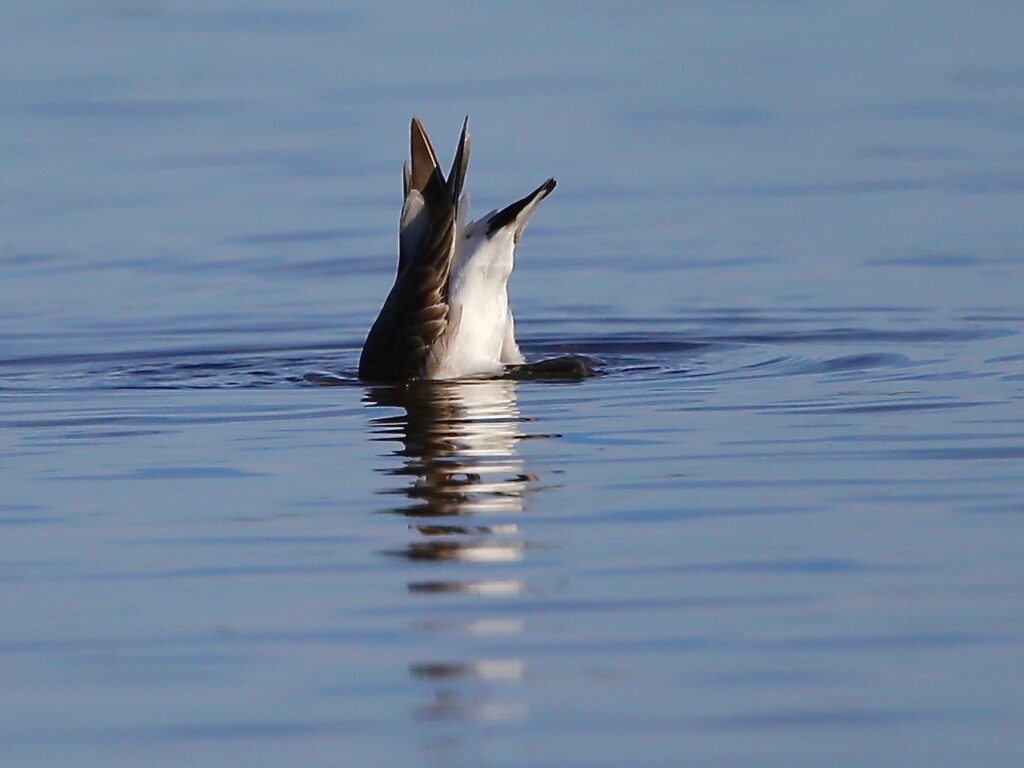
Migratory shorebirds make the long journey across the globe from places like Siberia, Japan and Alaska to visit the Gippsland Lakes, in some cases over 10,000 kilometres.
Visiting each year, they arrive in Spring and make the long-haul flight back to breed in the northern hemisphere as the weather turns colder in Autumn.
Most migratory birds travel to the Gippsland Lakes from breeding grounds in northeast Asia and Alaska along what is known as the East Asian Australasian Flyway. It is a 20,000-kilometre round trip for some of these birds.
Used by millions of waterbirds each year, the Flyway is a network of wetlands and coastal habitats from the Arctic through East and Southeast Asia to Australia and New Zealand where birds rest and feed during their long journeys.
The Bar-tailed Godwit, one of the larger migratory birds that visits the Gippsland Lakes, holds the world record for the longest non-stop flight by any bird recorded. This being a 13,560-kilometre journey non-stop from Alaska to Tasmania in only 11 days!
Bar-tailed Godwits stop off in the Gippsland Lakes after their long journey to rest and refuel. They leave Australia in late Autumn, returning to their breeding grounds in Scandinavia, northern Asia and Alaska. Young birds often remain in Australia all year, returning to the northern hemisphere the following year to breed.
The Gippsland Lakes Ramsar Site supports more than 90 species of waterbirds, including important migratory species such as the Bar-tailed Godwit, Red-necked Stint, Common Greenshank, Latham’s Snipe, and Sharp-tailed Sandpiper.
To celebrate the arrival of the migratory birds a community event will be held at Eagle Point Foreshore and Hub on Friday 10 October from 11am to 7pm. This free event is a fantastic opportunity to learn about the inspiring initiatives that protect and enhance the Gippsland Lakes and surrounding catchments and to connect with local agencies and community groups. Discover how habitat restoration projects are helping to support the migratory birds that visit our region each year.
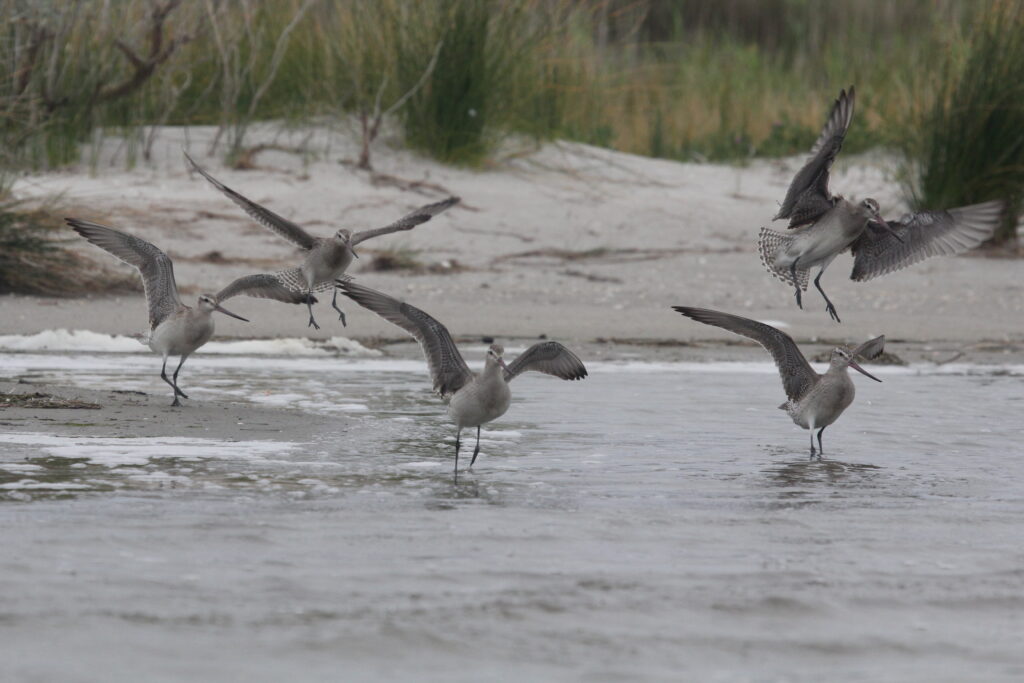
An investment of $1.2m has been secured to support and protect platypus habitat in the Mitchell River, one of 14 project areas across Victoria.
The work forms part of the landmark $24 million ‘Platy Patch Project’, a four-year, statewide initiative receiving significant co-funding from the Australian Government, Victorian Government, and Melbourne Water.
Although platypus is often sighted in waterways in East Gippsland, populations have declined substantially across mainland Australia, particularly in urban and agricultural areas.
Platypus are recognised as vulnerable in Victoria under the Flora and Fauna Guarantee Act 1988. The aim of this Victoria wide project is to rehabilitate streamside and aquatic habitats to help protect existing waterways that platypus rely on to survive.
Some of the common threats to platypus include land clearing and habitat degradation including bank erosion, sedimentation and pollution, as well as predation, population fragmentation, fishing by-catch and climate change.
The East Gippsland Catchment Management Authority (CMA) has identified multiple sites along the Mitchell River that are well suited for platypus habitat.
“The project will include introducing instream woody habitat structures in some areas, weed control, revegetation with native species and working with landholders to fence off riverbanks to restrict stock access,” East Gippsland CMA CEO Bec Hemming said.
“Once established, the instream woody habitat structures provide many functions that aim to benefit platypus populations. The structures will become home to aquatic plants to grow on, water bugs to live on providing both food and shelter for platypus.”
“Revegetating the riverbanks with native vegetation complements the instream structures by providing a whole range of benefits. Some of these benefits include reducing sediment runoff into the river, improving water quality, providing habitat for terrestrial animals, food for aquatic animals, and shade for the water, which helps control water temperature during the hotter months,” said Bec.
The project is jointly funded by the Australian Government’s Natural Heritage Trust under the Urban Rivers and Catchments Program, the Victorian Government, and Melbourne Water, under the guidance of the Arthur Rylah Institute (ARI), with the support of One Tree Planted, Ballarat City Council, Coliban Water, Zoos Victoria, and catchment management authorities. The project will also partner with Gunaikurnai Land and Waters Aboriginal Corporation (GlaWAC), DEECA, Australian Platypus Conservancy, Parks Victoria,local landholders and community groups.
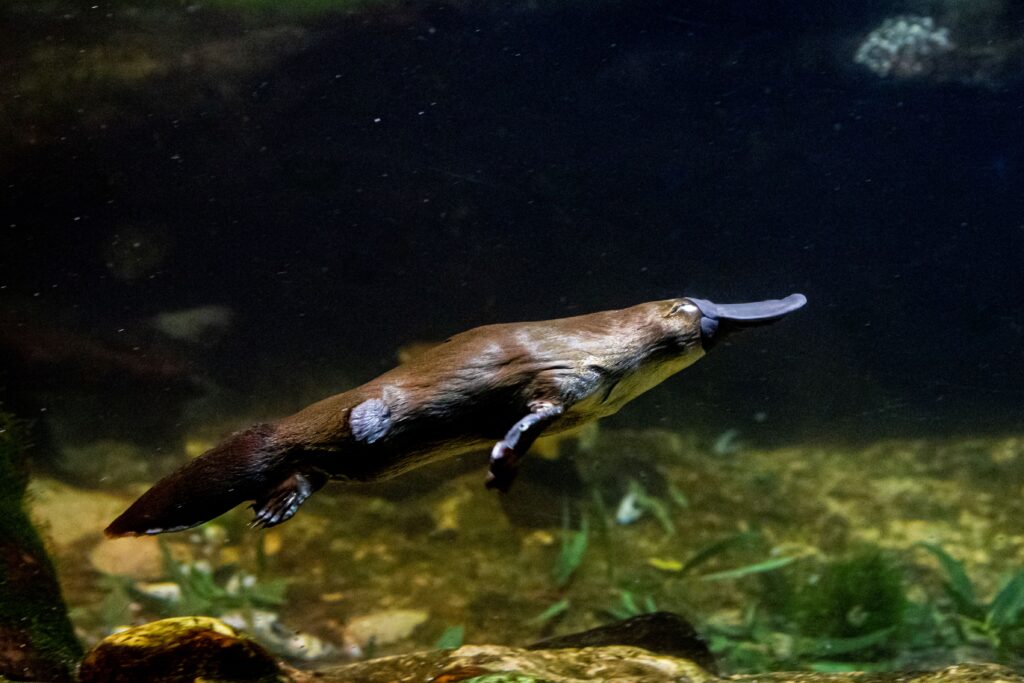
Join the EGCMA at one of our upcoming community information sessions being held across the region in July and August 2025.
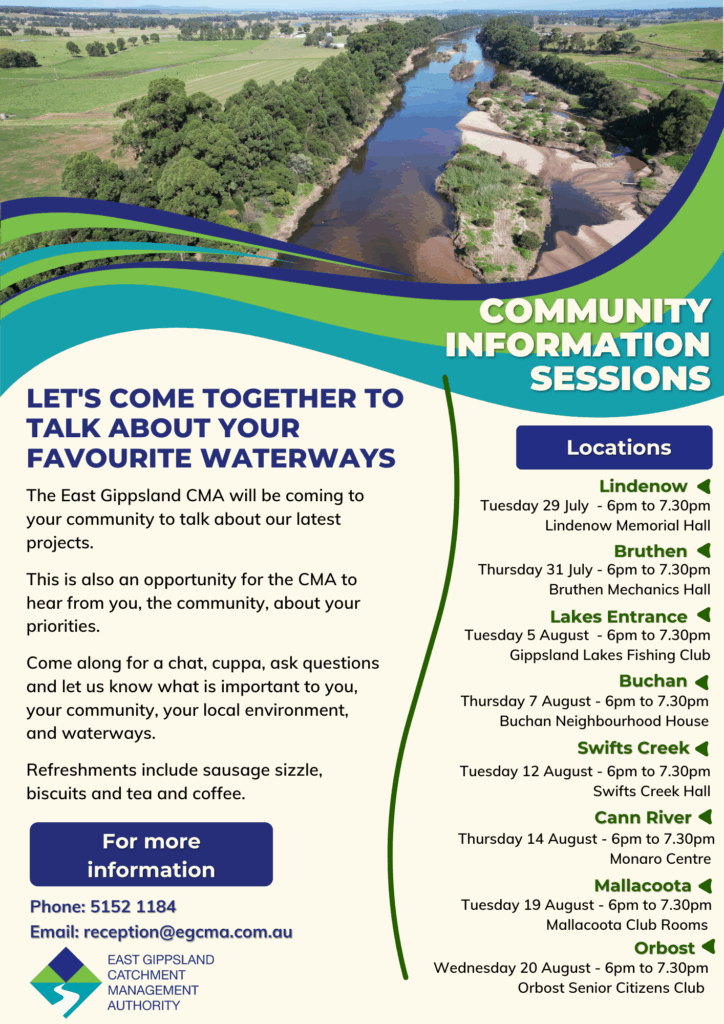
Watch this video to see and hear all about the Nicholson River from the top of the catchment to where it meets the Gippsland Lakes.
